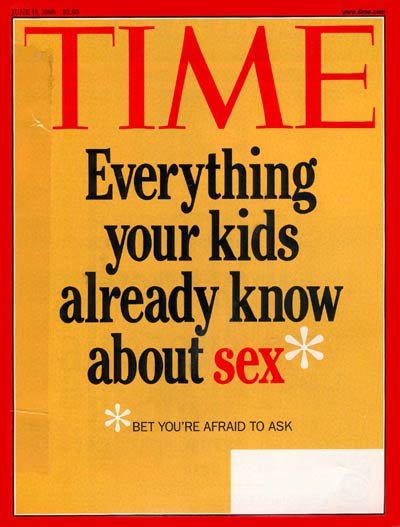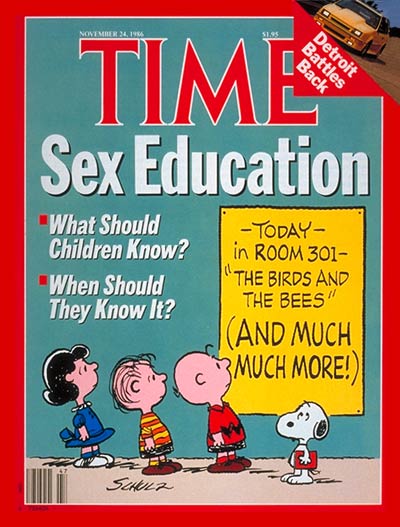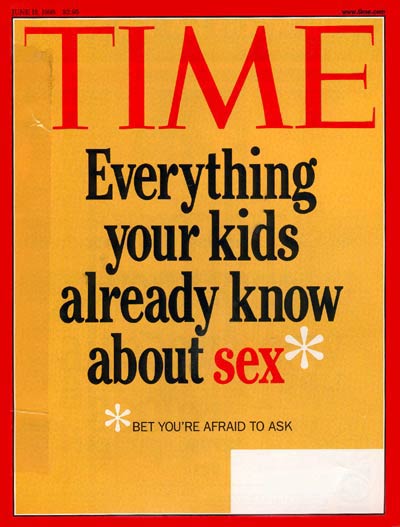
Within mere weeks of the publication of TIME’s first issue in 1923, sex education was making news: the “Social Hygiene Bureau” had done a survey of 5,000 American women, with the goal of designing a more “discriminating” kind of sex ed. This was news because 74% of the respondents admitted to using birth control of some sort, a surprising finding for the era.
Over the years, TIME’s coverage of the topic — which has included several cover stories — has ranged from 1930s worries about “over-intellectualization” of the topic, to Alfred Kinsey’s 1950s pronouncements that some form of sex ed should begin in infancy, to the first federal grants in the field in the 1960s, to a 1972 cover story’s finding that teens having sex younger didn’t mean they weren’t “woefully ignorant” on the topic, to Surgeon General C. Everett Koop’s 1980s statement that sex ed should be “as explicit as necessary,” to the 1990s fear that Dawson’s Creek was doing more to educate kids than schools were, to the 2000s fear that the Internet’s “porn factor” had replaced Dawson’s Creek.
And yet a few questions have been constant: How much of this is about the mechanics? How much is about the morality? How much should be done by schools and how much by parents?
Those debates continue today, as schools confront the problem of why they’re still having trouble teaching the topic.
Read more: Why Schools Can’t Teach Sex Ed in the Internet Age




More Must-Reads from TIME
- Cybersecurity Experts Are Sounding the Alarm on DOGE
- Meet the 2025 Women of the Year
- The Harsh Truth About Disability Inclusion
- Why Do More Young Adults Have Cancer?
- Colman Domingo Leads With Radical Love
- How to Get Better at Doing Things Alone
- Michelle Zauner Stares Down the Darkness
Write to Lily Rothman at lily.rothman@time.com